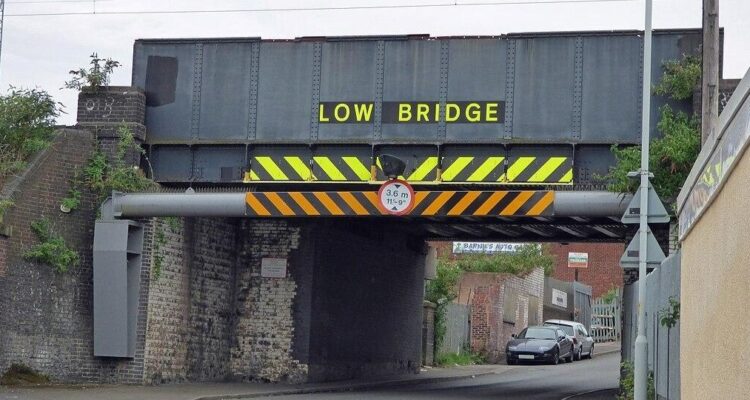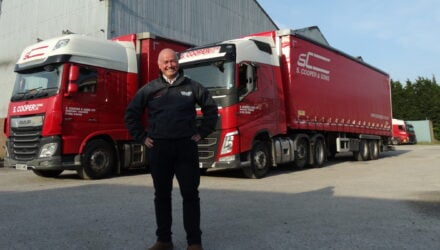Vehicles collide with low bridges on UK roads every six seconds costing millions to the UK economy despite the ready availability of preventative technology.
GPS technology companies like Snooper have developed simple, affordable low-bridge warning systems to help bus and truck drivers avoid catastrophic crashes.
And as haulage and bus operators wise up to the risks, incidents are slowly declining year-on-year.
However, with between 1,500 and 2,000 incidents of bus and truck bridge strikes in the UK every year, it’s a serious problem that doesn’t look like it will go away anytime soon.
If incidents are to continue to decline, lorry drivers need to know the height of their vehicles and choose suitable routes before heading out on journeys.
However, according to research from Network Rail, 43 per cent of lorry drivers admit to not knowing the height of their vehicles, and 52 per cent don’t consider low bridges.
Low bridge warning devices prevent bridge strikes by warning drivers in plenty of time so they can find a safe spot to turn around.
Incidents often occur when a driver switches vehicle, is moved onto a new route or needs to take a diversion en route.
Modern warning devices are portable between trucks and support multiple vehicles making it easier than ever for professional truck drivers to avoid costly accidents.
Network Rail has estimated the annual cost of incidents of vehicles hitting low bridges at £20 million in delays, cancellations and repairs.
Bridge strikes have a significant impact on logistics businesses, with claims for repairs and disruption alongside lost revenue and increased premiums hitting them hard.
Ultimately though, it is the UK taxpayer who foots the multimillion-pound annual bill for repairs and disruption, a cost widespread use of technology would dramatically reduce.
Steve Digva, the visionary behind Snooper, believes that if low-bridge warning technology were rolled out nationwide, bridge strikes would become a thing of the past.
He said: “The latest figures released by Network Rail make alarming reading, with a bus or lorry hitting a bridge in the UK every six seconds.
“Every year it costs the UK taxpayer over £20 million in repairs, congestion, delays and impact on the economy.
“With around half of lorry drivers admitting to setting out without knowing the dimensions of their vehicle or whether there are low bridges en route, technology can make a big difference.
“If every lorry and bus was fitted with a device to alert the driver they were approaching a low bridge, millions of pounds would be saved and all UK transport users would be safer.
“The cost of a bridge saver device is peanuts compared to the cost to an operator if a bus or lorry were to hit a low bridge.
“We fully support Network Rail’s ‘Wise Up, Size Up’ campaign, and the widespread use of technology to give operators and drivers an additional layer of protection is the logical next step.
“Any driver approaching a low bridge whether by accident or lack of planning can’t help but be alerted to the danger and avoid a catastrophe from occurring if they are using a low bridge warning device.”



















